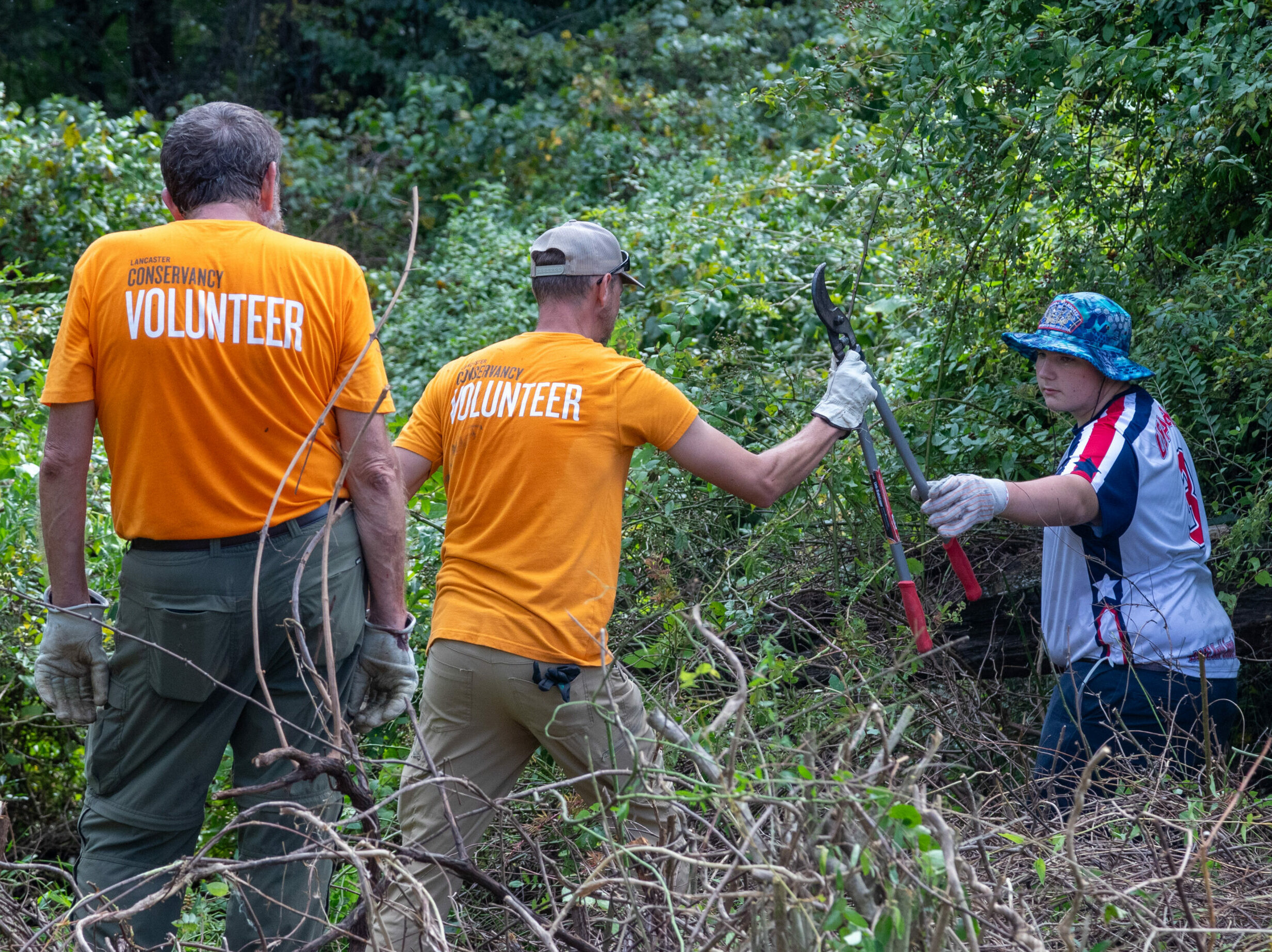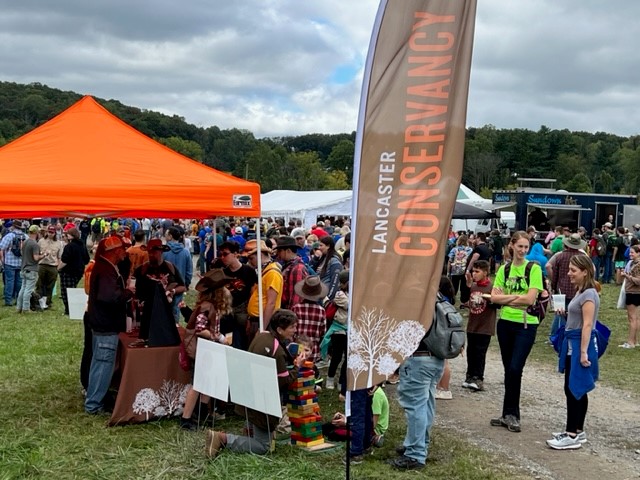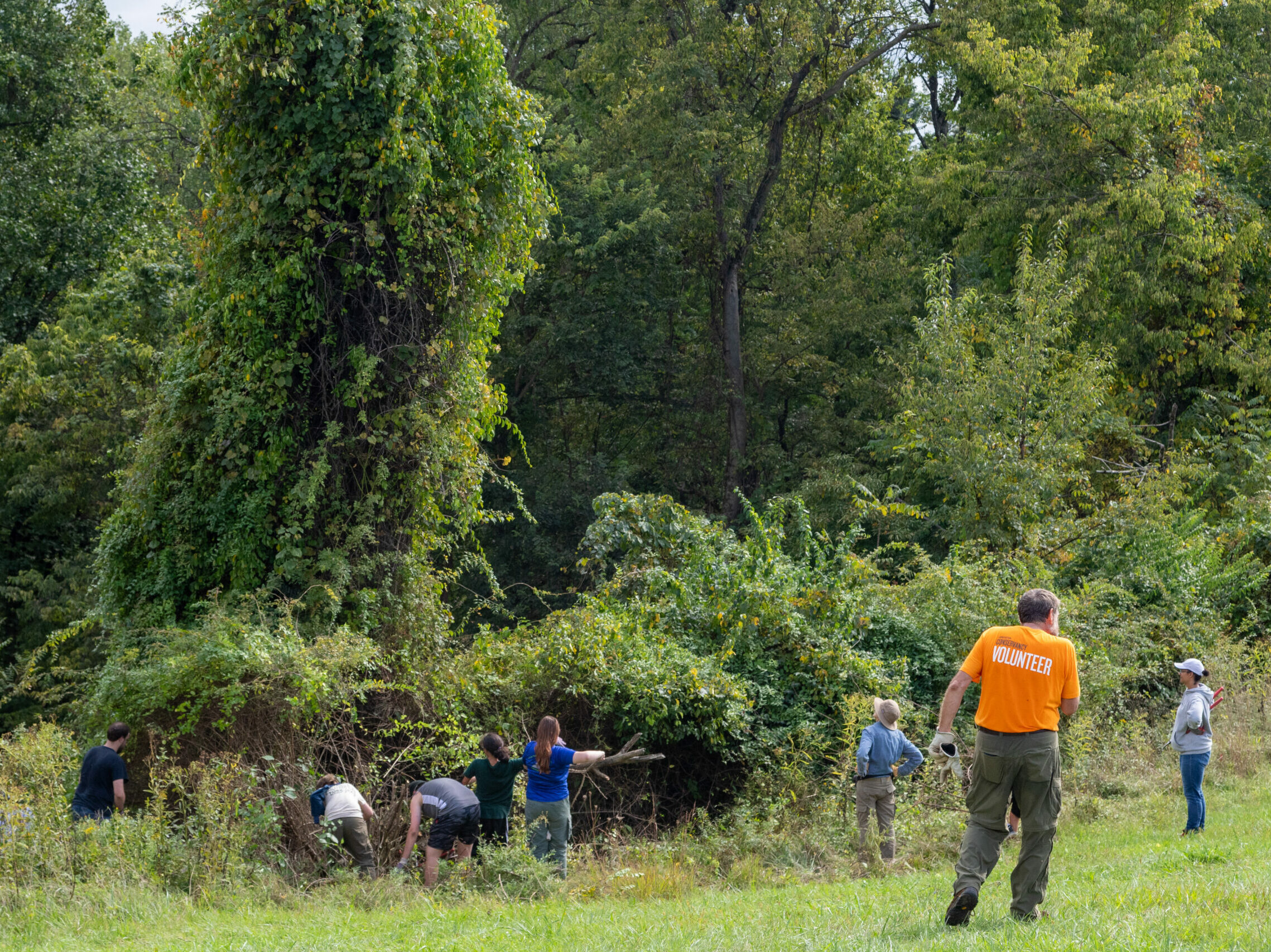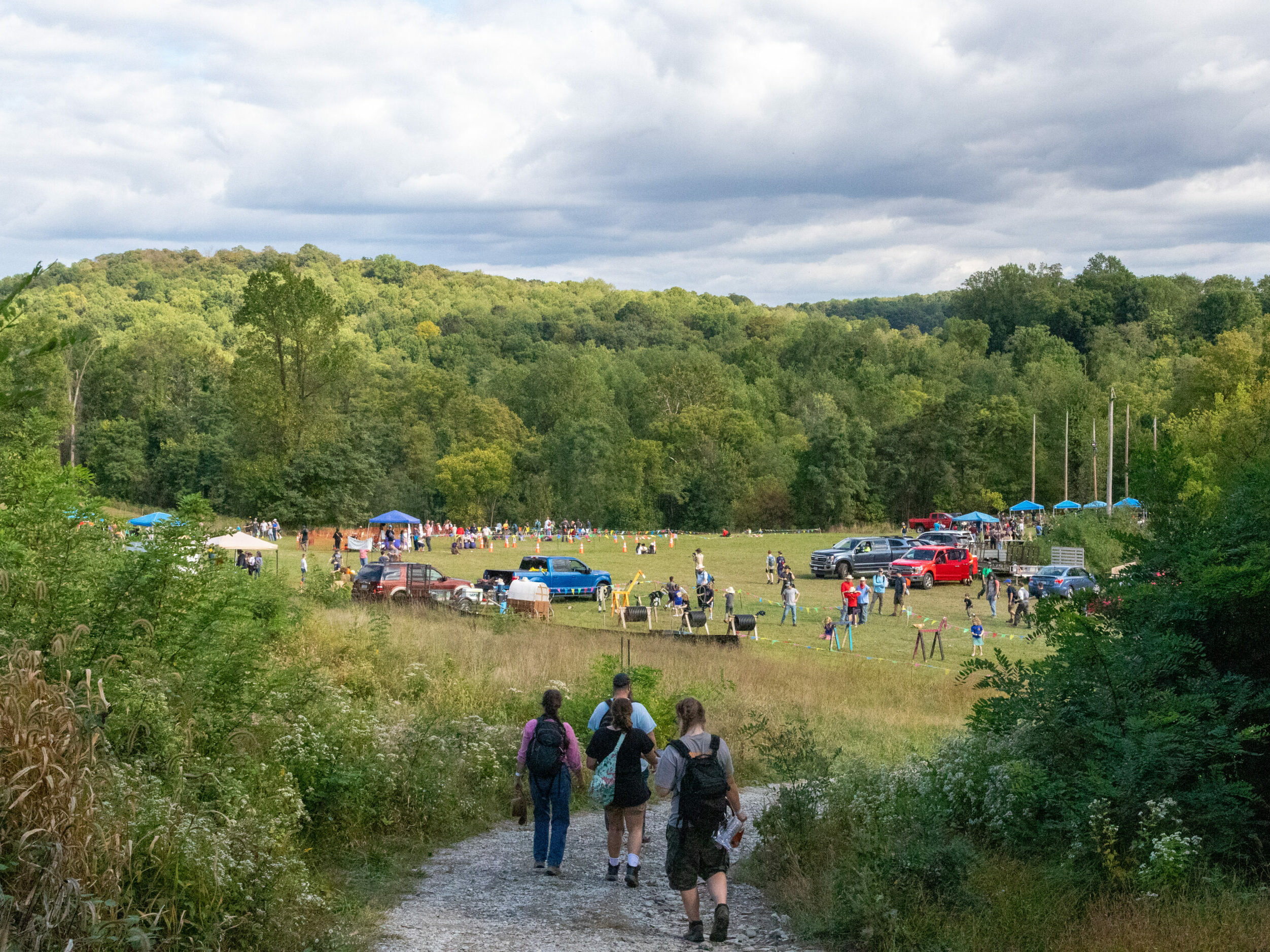By Keith Williams, Vice President of Engagement & Education
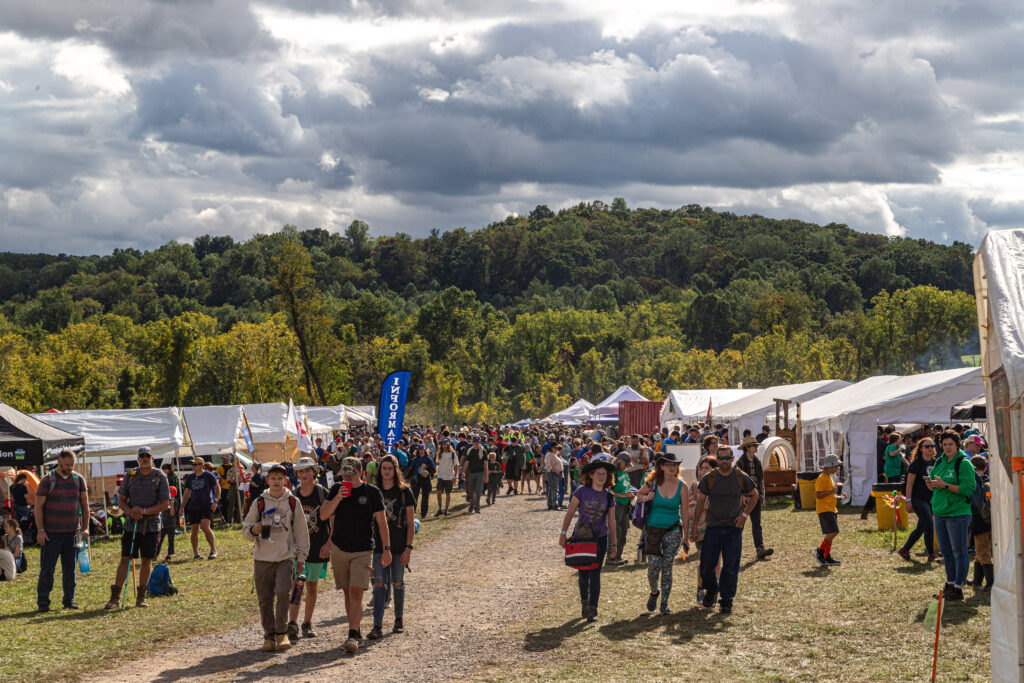
Wizard Safari 2023 (Photo by Hylon Plumb)
Over the last weekend in September, 3,000 people came to Wizard Ranch Nature Preserve for the Wizard Safari, organized by the Boy Scouts New Birth of Freedom Council. The Lancaster Conservancy’s team of staff and volunteers engaged 1,500 people in short conversations about the importance of land protection and stewardship, and 75 Scouts helped us remove 60 cubic yards of invasive privet and multiflora rose – enough to fill two dumpsters! This is a great new partnership in conservation for the Conservancy and the Scouts.
The Wizard Safari was started by Mahlon Haines. He was the self-proclaimed Shoe Wizard in York County, which is how Wizard Ranch got its name. Mr. Haines had a strong affinity for scouting, so he used his 250-acre property to benefit the Scouts. Rumor has it the Safari event got its name because Mr. Haines imported exotic animals to the property and invited Scouts here for a jamboree style event. That tradition continued without the zebras and giraffes for the next 20 years. Wizard Ranch became a Boy Scout property when Mr. Haines donated the land to the Scouts. The Lancaster Conservancy purchased land from the Scouts four years ago to protect it from development forever.
The sales agreement requires the Conservancy to make the property available to the Scouts every four years for the Wizard Safari, so the tradition continues, but the Safari is more than a requirement in a sales agreement – it’s an opportunity to engage and connect. There were 3,000 people here on Saturday, September 30, half of them were kids and half of them were current decision makers. Our staff and team of volunteers spoke with them about the importance of land protection and the difficult work of restoring the land once it’s protected, as well as how they can get involved in this work. Seventy-five Safari participants decided to get their hands dirty as they helped us remove invasive privet, multiflora rose, and Japanese honeysuckle, the first step in restoring native ecology.
I had some concerns in the weeks leading up to the Safari about how thousands of people on a nature preserve may impact the stewardship management goals to increase insect, bird, and bat populations. But as the Scouts moved in and set up an old western town for the event, and the infrastructure needed to support a community of 3,000, the concerns diminished. By the time the old western town emerged, it was apparent the Scouts cared for this land as much as we do.
The town went away as quickly as it came together, and within 24 hours the only evidence of 3,000 people being on site was some trampled meadow, which may not be a bad thing. The meadows we are working to restore at Wizard require disturbance. Historically that disturbance came from periodic grazing by large herbivores like bison, as well as by fire. Conservancy Educator Peggy Eppig said it best: It was like a big herd of buffalo went through in a day. I think this every-four-year Safari event might just be the disturbance these ecosystems need, with help from our Stewardship team and Volunteer Land Stewards, to become restored.
The Wizard Safari is about more than a requirement in a sales agreement or even fitting in with the long-term ecosystem management goals of the preserve. This is all about relationships. Relationships between two different organizations – the Boy Scouts and the Lancaster Conservancy – that share some similar goals related to engaging tomorrow’s leaders. It’s about relationships with each other to form a community that can come together to support conservation. And ultimately, it’s about relationships with the land and the world around us that we care for and protect so that we send it on to future generations in better shape than when we inherited it.
